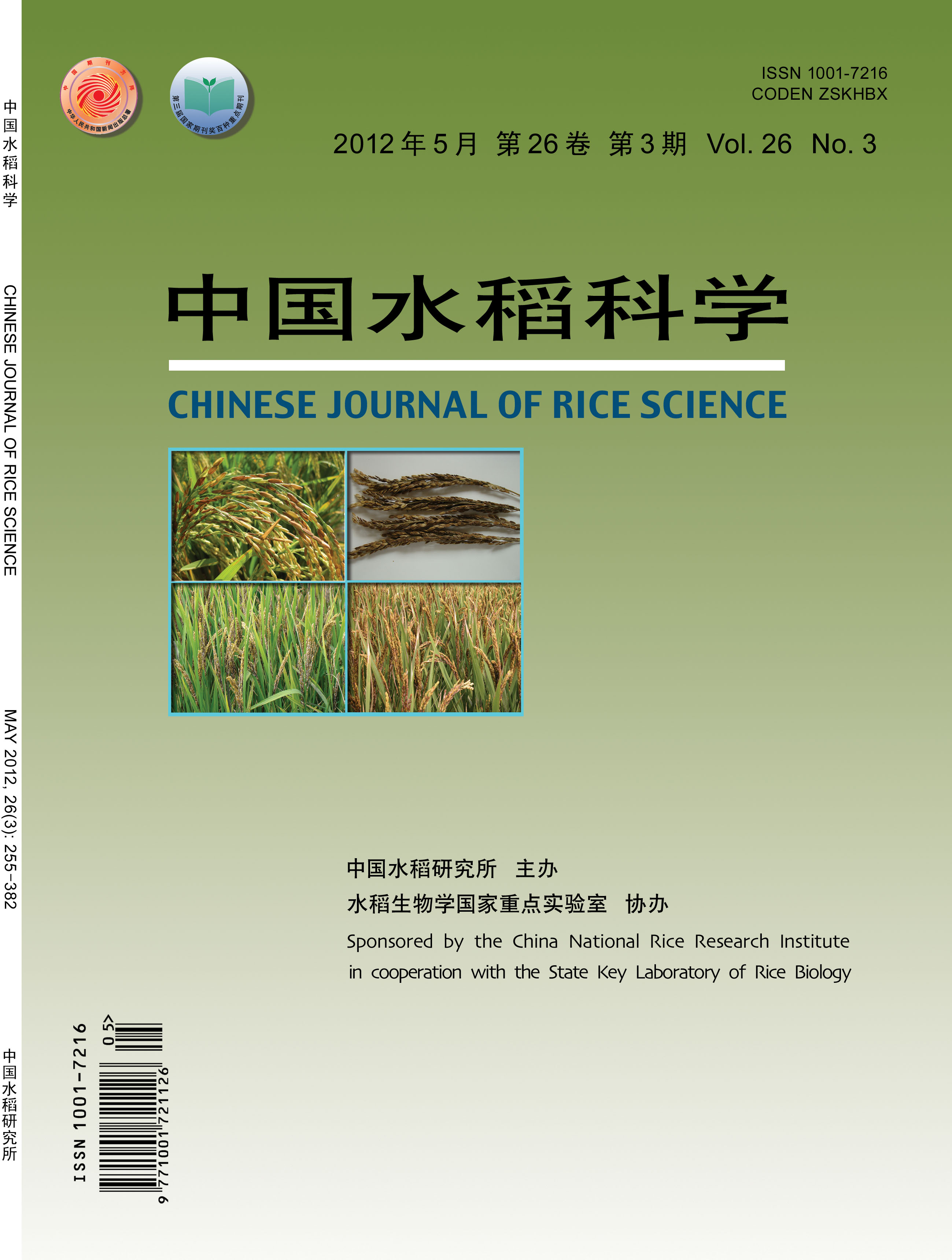|
|
Effect of Seedling Standing and Establishment on Photosynthetic Characteristics and Matter Production of Broadcasted Rice
GUO Baowei1, ZHANG Hongcheng1,*, ZHANG Chunhua1, CHEN Houcun2, XU Ke1, ZHOU Xingtao1, ZHANG Jun1, CHEN Jingdu1, WEI Haiyan1, DAI Qigen1, HUO Zhongyang1, GAO Hui1, ZHU Congcong1, XING Lin1, HUANG Xingfu1
2012, 26(3):
311-319.
DOI: 10.3969/j.issn.10017216.2012.03.009
The photosynthetic characteristics and matter production of broadcasted rice seedlings were studied to lay a theoretic basis for highyielding and superhighyielding cultivation of broadcasted rice with Nanjing 44 as material under five treatments including the upright seedlings with soil(USWS), leaning seedlings with soil(LESWS), lying seedlings with soil(LASWS), lying seedlings without soil(LASWTS), upright seedlings without soil(USWTS). Results were as follows: 1) Seedling standing speed showed the trend of LESWS> LASWS> LASWTS; 2) LAI of LASWTS kept decreasing during seedling standing period, while LAI of others increased. The proportions of yellow leaf in LASWTS, USWTS, LESWS, LASWS and USWS reached their peaks at 8 d, 6 d, 2 d, 2 d, 2 d after broadcasting, respectively, and fell thereafter. 3) The dry weight of the aboveground parts all increased except LASWTS during the seedling standing period, with the general increasing rate of USWS>LESWS>LASWS>LESWTS>USWTS. Moreover, the dry matter accumulation, leaf area duration and net assimilation rate under various treatments showed the same trend. 4) Tiller number, population LAI, effective LAI rate, efficient LAI rate, ratio of grain to leaf area, photosynthetic potential, net assimilation rate, dry matter accumulation and growth rate of broadcasted rice at different growth stages all exhibited the trend of USWS>LESWS, USWTS>LASWS>LASWTS, and the net photosynthetic rate at heading stage and 20 d after heading showed the same trend as well. Given these observations, it could be concluded that the process of standing and establishment of seedlings with soil was faster than that without soil, and that of upright or leaning seedlings was faster than that of lying seedlings, which could be altributed to their stronger population growth during the whole period. Therefore, it is needed to choose seedlings with soil and to increase the proportion of the upright seedlings in order to obtain better photosynthetic characteristics and higher matter production capability, thus making for preferable plant growth and higher yield formation.
|

